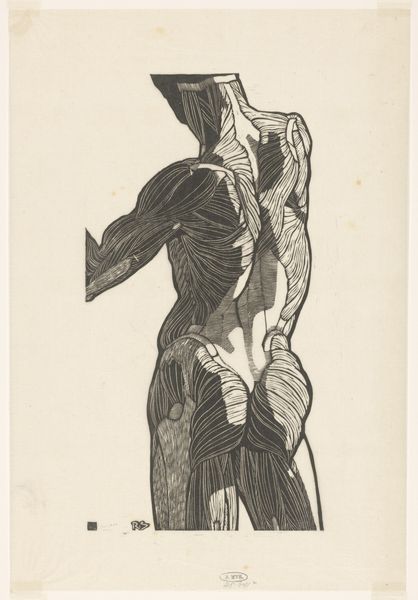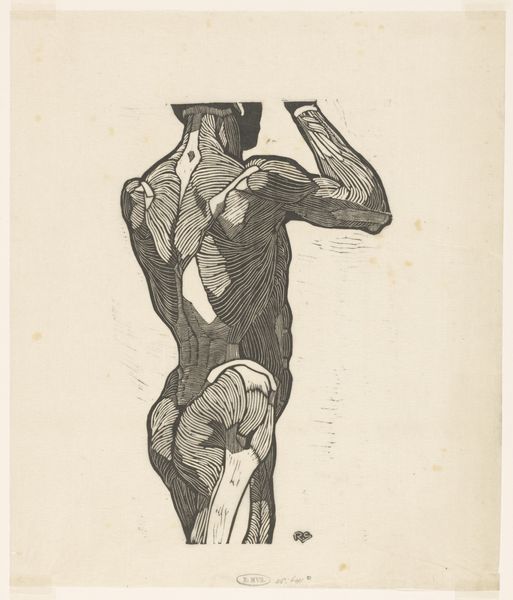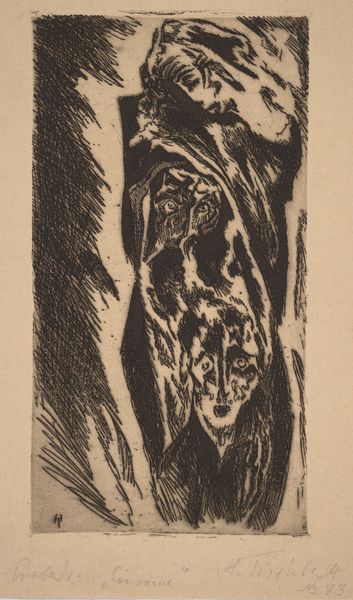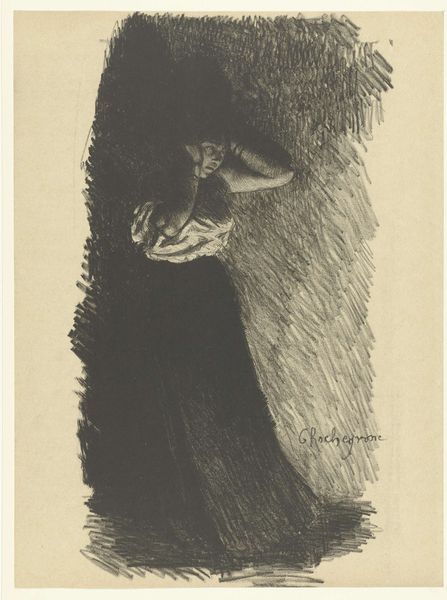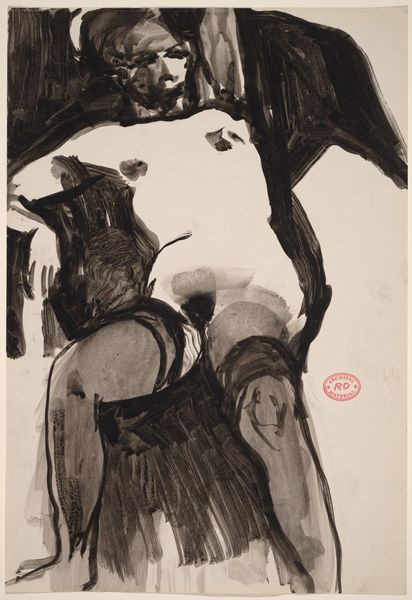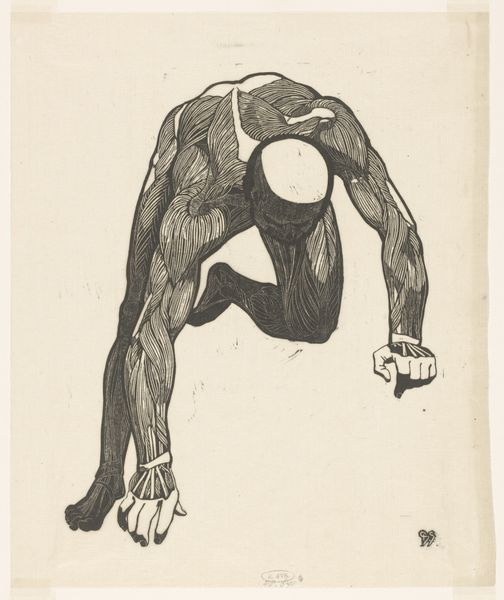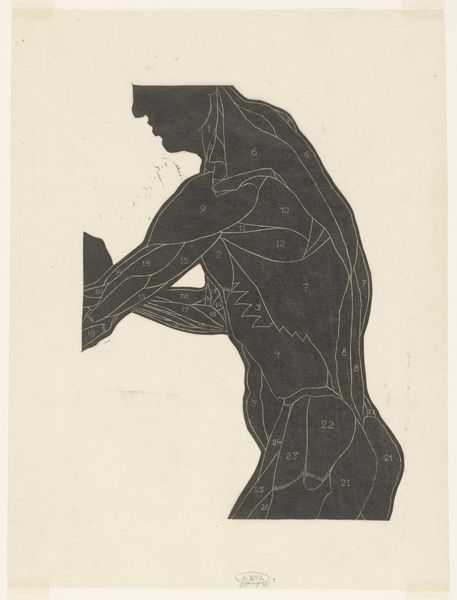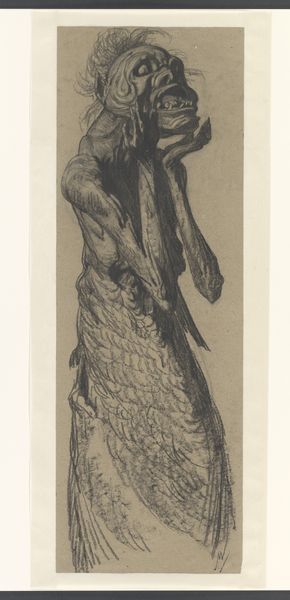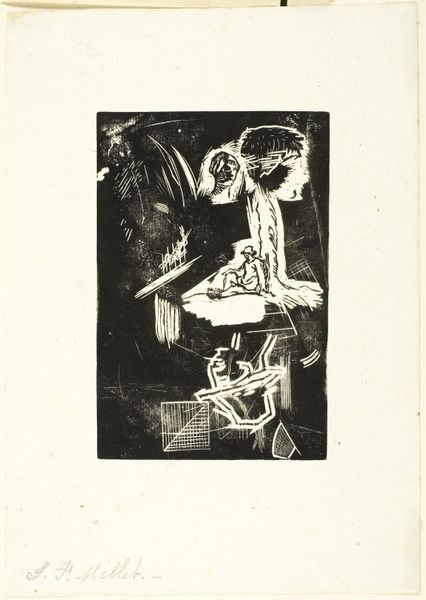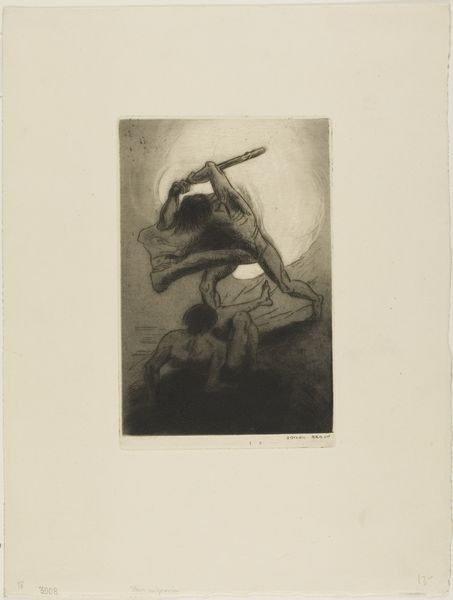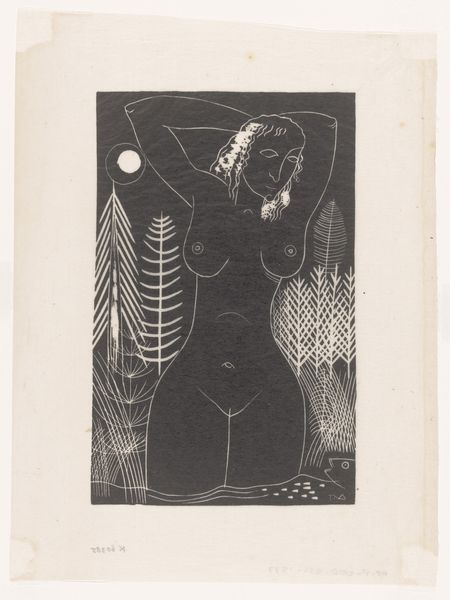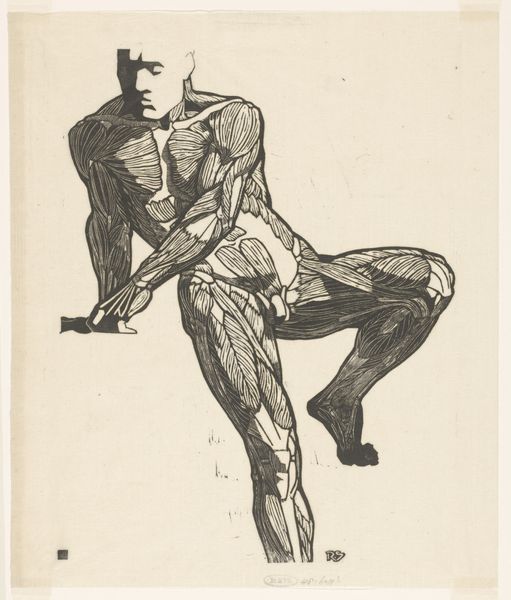
drawing, etching, intaglio
#
drawing
#
etching
#
intaglio
#
old engraving style
#
figuration
#
form
#
line
#
academic-art
#
nude
#
realism
Dimensions: height 315 mm, width 265 mm
Copyright: Rijks Museum: Open Domain
Curator: Here we have "Anatomische studie van de zij- en armspieren van een man," which translates to "Anatomical study of the side and arm muscles of a man." This etching, dating between 1906 and 1945, showcases a detailed exploration of human anatomy through the medium of intaglio printmaking. Editor: Wow, the stark contrast immediately grabs you. It’s almost brutal, isn’t it? The way the muscles are laid bare feels less like a scientific study and more like a raw, vulnerable depiction of the human form. Curator: The work exemplifies the academic tradition of anatomical studies. These were often commissioned or created to serve as visual aids for medical students, highlighting a societal need to codify the body as something to be understood, and in its way, controlled. Editor: Absolutely. But even within that context, there’s an underlying tension. Look at how the lines delineate the muscles – they’re so sharp and defined, almost like an etching on the very concept of masculinity. It feels incredibly objectified, like the man is reduced to his physical form, his power and strength displayed yet also undermined by his dehumanization. What is the politics of viewing the male nude during this time period? Curator: That’s an important observation. The piece uses a traditional printmaking style reminiscent of older medical illustrations, yet the raw exposure of muscle without skin challenges notions of a romanticized male nude. We also must understand it in the context of artistic and scientific expression of this period. It sits at the crossroads of art as objective record versus art as individual expression. It would serve to question if anatomical renderings such as this played into racial tropes present during this era. Editor: Precisely! There’s something unsettling about the almost clinical gaze, devoid of emotionality, especially considering what was happening in the world at the time. It is through that removal and objectivity that we gain the privilege as a viewer, to see through this shell of the corporeal form. I also see an emphasis on realism as it intersects with abstraction, especially regarding negative space. The face remains a mystery to us, so it beckons one to ask where does humanity stand regarding objective anatomical analysis. Curator: I agree. It really challenges us to reflect on the interplay of artistic tradition and the evolving social implications of depicting the human body. The artist has undoubtedly created a thought-provoking piece for further academic conversation. Editor: Yes, an experience that transcends the boundaries of anatomy, stirring questions about power, objectification, and the human condition. A perfect springboard for recontextualizing how we view depictions of masculinity throughout art history.
Comments
No comments
Be the first to comment and join the conversation on the ultimate creative platform.

